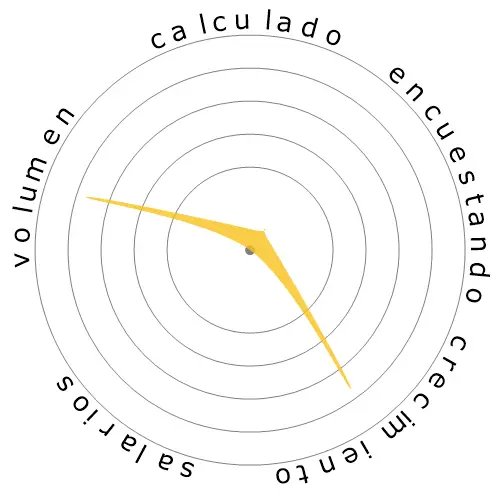Conductores/Trabajadores de Ventas




Las personas también vieron
Riesgo de automatización calculado
Riesgo Inminente (81-100%): Las ocupaciones en este nivel tienen una probabilidad extremadamente alta de ser automatizadas en un futuro cercano. Estos trabajos consisten principalmente en tareas repetitivas y predecibles con poca necesidad de juicio humano.
Más información sobre qué es esta puntuación y cómo se calcula está disponible aquí.
Encuesta de usuarios
Nuestros visitantes han votado que es probable que esta ocupación se automatice. Esta evaluación se ve respaldada por el nivel de riesgo de automatización calculado, que estima una posibilidad del 93% de automatización.
¿Cuál crees que es el riesgo de la automatización?
¿Cuál es la probabilidad de que Conductores/Trabajadores de Ventas sea reemplazado por robots o inteligencia artificial en los próximos 20 años?
Sentimiento
El siguiente gráfico se incluye siempre que haya una cantidad sustancial de votos para generar datos significativos. Estas representaciones visuales muestran los resultados de las encuestas de usuarios a lo largo del tiempo, proporcionando una indicación importante de las tendencias de sentimiento.
Sentimiento a lo largo del tiempo (anualmente)
Crecimiento
Se espera que el número de ofertas de trabajo para 'Driver/Sales Workers' aumente 9,2% para 2033
Empleo total y estimaciones de vacantes laborales
Las proyecciones actualizadas se deben 09-2025.
Salarios
En 2023, el salario anual mediano para 'Driver/Sales Workers' fue de 35.420 $, o 17 $ por hora.
'Driver/Sales Workers' recibieron un salario 26,3% más bajo que el salario medio nacional, que se situaba en 48.060 $
Salarios a lo largo del tiempo
Volumen
A partir de 2023, había 463.120 personas empleadas como 'Driver/Sales Workers' dentro de los Estados Unidos.
Esto representa alrededor del 0,30% de la fuerza laboral empleada en todo el país.
Dicho de otra manera, alrededor de 1 de cada 327 personas están empleadas como 'Driver/Sales Workers'.
Descripción del trabajo
Conduzca un camión u otro vehículo por rutas establecidas o dentro de un territorio establecido y venda o entregue productos, como alimentos, incluyendo artículos para llevar de restaurantes, o recoja o entregue artículos como lavandería comercial. También puede tomar pedidos, cobrar pagos o almacenar mercancías en el punto de entrega.
SOC Code: 53-3031.00


Comentarios
I think by 2040, the majority of cars on the road will be driven by AI.
And if you don't need human drivers, then trucks and lorries will not make sense from a business standpoint. So, I think large trucks will disappear and a large truck will be replaced with a fleet of smaller cars driven by AI artificial intelligence algorithms.
letters...
If a drone loses signal...what, hover in place with 500 other stones until the battery runs out, return to base, etc..
If the Earth's GPS coverage reaches 100% confidence over an entire delivery area then yes, automation, UNLESS the delivery is to a condo/apartment/mobile home park/ hotel or any delivery point that exists as one unit among many, all sharing the same street address. If these two issues are solved then yes, automation. If these issues persist it will delay implementation.
In sum, it could go either way.
Sincerely,
Heath Edwards
Multiple addresses in one place would also be handled initially by the human equivalent expedient of dumping the package at the apartment block door or leaving a "we missed you - come collect your package at the depot" postcard... given that the delivery times would probably still be faster there would be as few complaints as now (and it would get blamed on software errors instead of shuffling the human to a different route).
This might improve with new buildings with drone landing pads on the roof with special recepticles might well become the norm, proving safer for the incoming packages as well as not having to go to the depot to collect packages that could not be delivered because you weren't in.
Deja una respuesta sobre esta ocupación